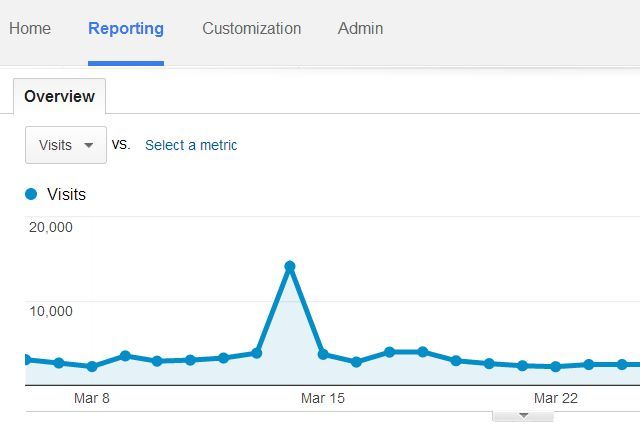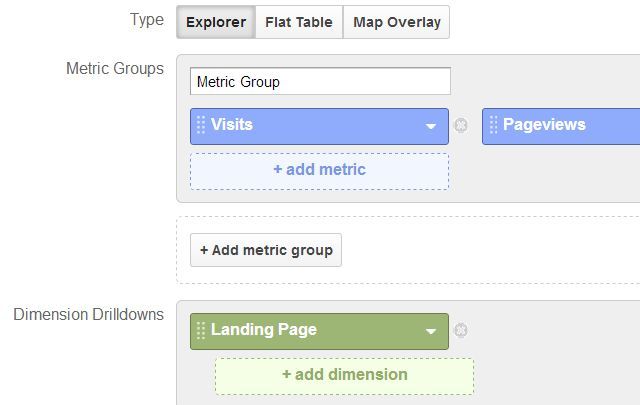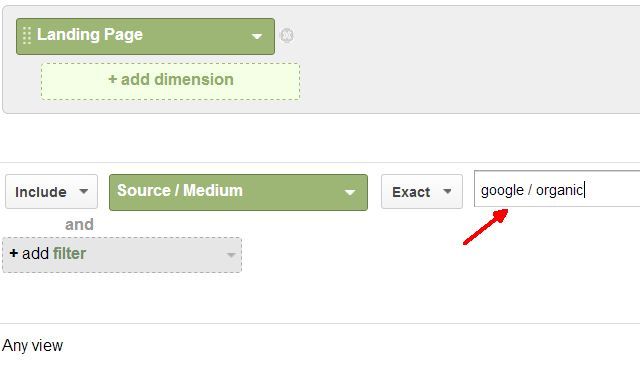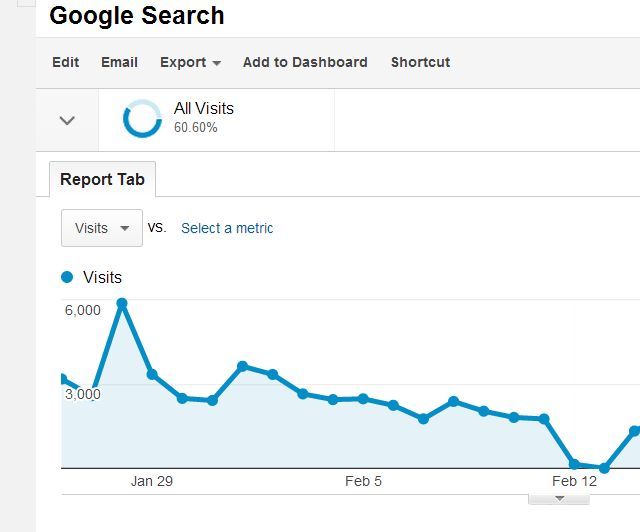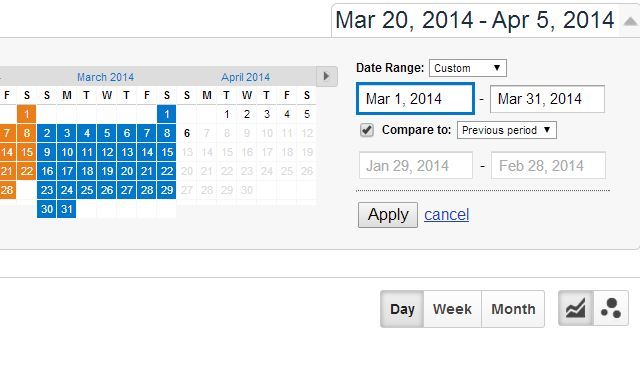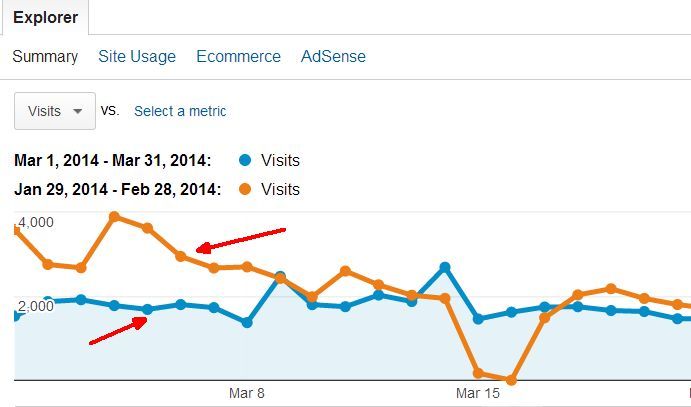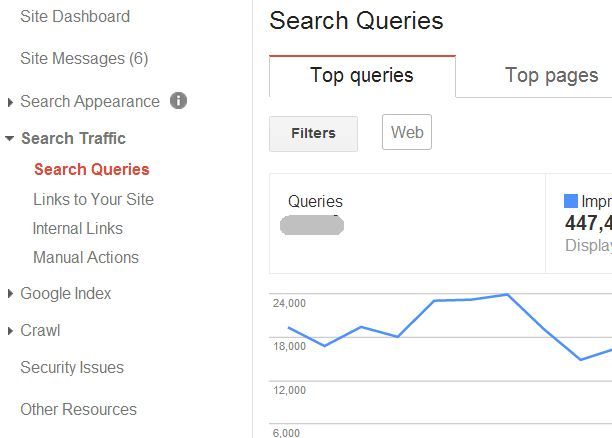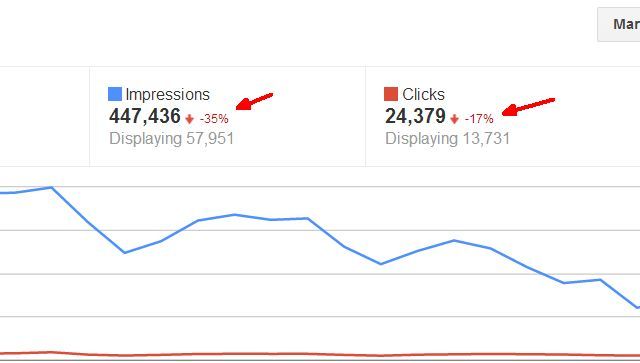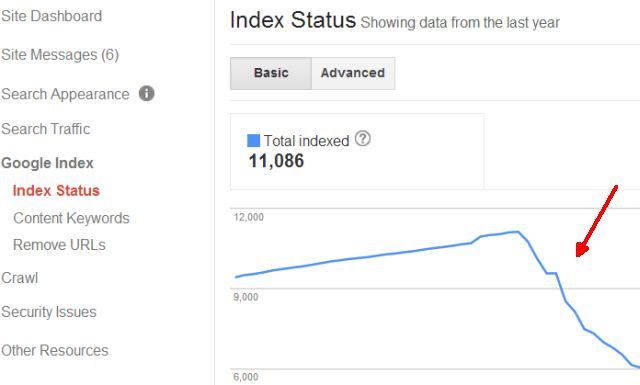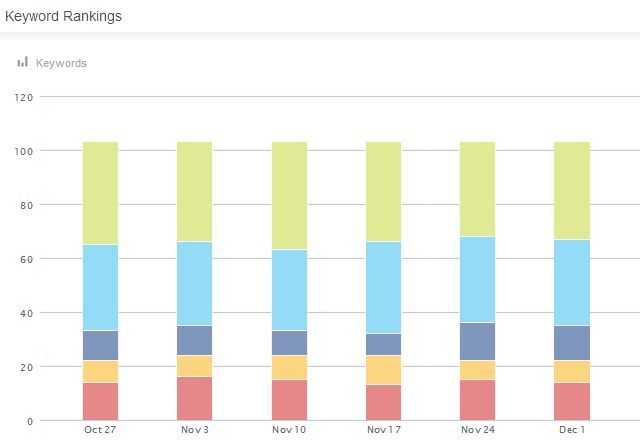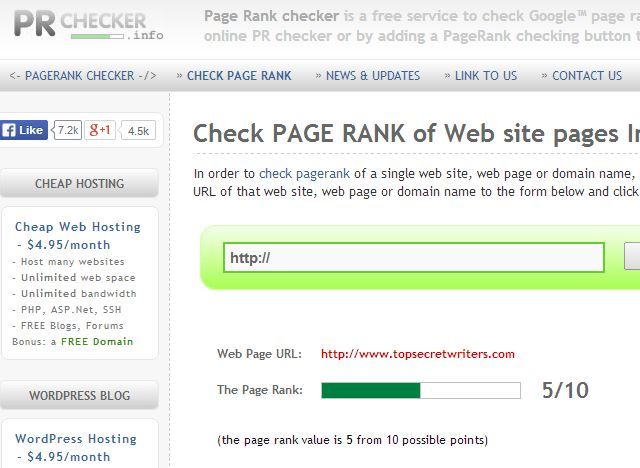When you're on a road trip, it's nice to know where you are on a map, and how far you've got left to go until your destination. The same is true with your website. If your goal is to achieve the most traffic possible, you want to know if you're achieving that goal, or if you're headed for the cliff.
There is nothing more disturbing for a website owner or blogger to one day check Google Analytics only to discover that most of the site's traffic has disappeared, and there's no clue anywhere as to why it even happened. If you own a website or you're trying to build up a successful blog, monitoring the health of your website in search engine results is critical. Identifying problems and fixing them the moment they occur can mean the difference between quick recovery, or a spiraling death.
Sure, we often publish in-depth and complex articles about SEO here at MakeUseOf. However, we also work hard to demystify SEO and make it easy for you to apply to your own site even if you aren't an expert.
In this article, I'm going to give you four ways that you can measure your website to see if it's still performing as well as you think, or whether something odd happened that's causing you to loose all of your valuable search engine traffic.
What to Check in Google Analytics
You probably already realize that Google Analytics is one of the best web traffic analysis tools on the web, but unless you look at the right data, you're not really going to be able to spot issues with your website's standing in search engines.
You could just check to see if you have a drop in overall pageviews or visits, but what a standard pageviews graph will show you is traffic coming from everything - including social referrals, referrals from other websites, direct traffic, and everything else.
The "organic traffic" metric gives you all traffic on a page that came from search even if its the 3rd, 4th or 5th hit on your site: this isn't what we want. The trick is to identify traffic coming directly from the Google search engine that is landing on your site, then ignoring any page views they generate after that as they click around internally. The custom technique I'll describe below filters by landing page instead. This tells you a specific page's ability to draw direct search traffic.
To do this, just go to the Customization section of Google Analytics and create a new custom report. Add whatever metrics groups that you like in addition to pageviews and visits, and then set the dimension to "Landing Page", which you can find under the "Behavior" menu choice.
Finally, you want to set the filter to include only source traffic with a "Source/Medium" of exactly "google/organic".
Now you're looking at purely organic search traffic, which will give you a clear picture of just how well you're doing drawing in traffic from the search engines. If you're seeing this value dropping rapidly over a few days or a few weeks, it's a clear indication that you have a major problem that you need to research and resolve.
This is an indication that some Google algorithm change could have impacted your site, or that some change you made to your design or how you write your content might have impacted your search standings in a negative way.
Comparing Time Periods
Additionally, even if you don't see a sudden drop when you look at your incoming Google search traffic, you still want to examine your monthly performance compared to your last month's performance. Even though this month's performance looks like a straight line, comparing to a past period could reveal a gradual downward trend that you didn't realize.
To do this, go up to the date range of your Analytics display, select the "Compare to" checkbox, and make sure "Previous period" is selected.
"Previous Period" defaults to the matching timeframe in the past. So in this case since the present month is set up, the past month is used for the previous period. Click on apply, then the scroll back down and look at your charts.
The charts are color coded by timeframe. In the example above, orange is the past, and blue is present. As you can see, past month's search performance was quite a bit higher than this months, so this could indicate a change this month. Doing this same comparison over a longer period of time, like three or four months, can also show you a gradual negative trend that you'll want to jump on and fix right away before it gets worse. Start researching the the SEO forums and blogs out there to see if there's any news about what might be hurting your SEO standings.
Researching Google Webmaster Tools
Probably one of the best tools for monitoring the search engine health of your site is Google Webmaster Tools, simply because it gives you a direct view into not only how much interest your site is getting in search engines, but what specific search queries are driving the most traffic to your site.
However, to gauge your search engine health, all you need to do in Webmaster tools is expand Search Traffic in the sidebar navigation, and click Search Queries.
You'll see a graph showing your overall volume of both impressions and clicks for your top search queries in Google search. Again, here if you see a general decline like the one below, you've got some major problems. You're losing ground across your best search queries.
Scroll down and review the queries - clicking on individual phrases will show you each trend, and you can find which ones are headed in a downward direction.
An even better indicator of search engine health is the Index Status under the "Google Index" menu item. This provides statistics about the pages on your site that Google was able to index.
If you see a sudden drop here, that's a serious problem and you want to figure out why Google is no longer indexing all those pages on your site. No indexing means those pages won't show up in search results, and that's a bad thing. This could be any number of things that could hurt your SEO, from incorrectly configuring canonical tags to having large sections of your site impacted by some major algorithm update. Whatever has caused it, this is a good indication that you've got to start doing some research and finding out what needs fixing.
Using SERP Checkers
Another alternative you can use to keep an eye on your website's SEO health are one of the many SERP check websites out there. Like Webmaster Tools and Analytics, you can monitor how well you're doing across all of your target search queries, however SERP monitoring services usually make this a little more convenient by allowing you to set up a list of specific search terms, and the service will do all the research for you and lay the information out in nice, clean graphs and charts.
Typically, you need to provide the service with a connection to your Google Analytics account, but if you do, you can see your rank positions organized nicely into categories and displayed in charts that make it very clear whether or not you are doing a good job ranking well across your target keyword phrases.
Pagerank - Keep an Eye On It
For the most part, these days SEO experts agree that a website's pagerank doesn't necessarily translate directly into lots of pageviews. However, it is a pretty good gauge of how healthy your site is within Google algorithms, because it's essentially a scale of how "important" a website may be. If your website has been a PR 5 for a very long time, and then suddenly it drops to 4 or 3, that would indicate there's some issue with your site that Google took issue with. It could indicate some manual action or some other penalty applied against your site by Google's calculations.
There are lots of sites out there that you can use to quickly check your site's pagerank. One of my favorites is PRChecker, simply because it's so easy to use.
Check the rank of your site monthly and make sure there's no major change in the downward direction. Hopefully, instead, you'll see that number continue to climb over the years.
Staying on top of your search engine standings takes diligence, and sometimes can require quick thinking and hard work, especially when things go wrong. But, have no fear, if you stay on top of things and keep your site aligned with all of Google's recommendations, you'll be able to keep growing your search position well into the future.


